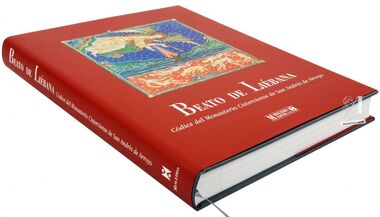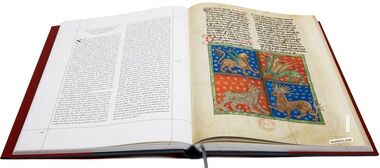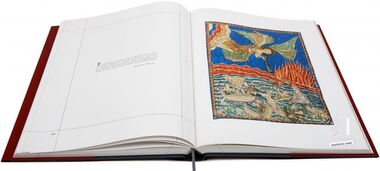


+ 12

The characteristic traits of the Arroyo Beatus make it unique amongst all other beatus codices. It is considered to be a late beatus that combines two features: its images contain high Romanesque formulae and elements reminiscent of the illustrative tradition of early medieval beatus codices, emphasising its ability to enlighten and convey God’s message more effectively than words. In addition, this codex heralds in a return to the visual bases of classicism. The stylistic similarities between the Arroyo Beatus and the Cardeña Beatus suggest that it may have been illustrated in the San Pedro de Cardeña Monastery. The manuscript was given to the San Andrés de Arroyo Cistercian Monastery where it was safeguarded by the monks in charge until it was acquired from M. Toca in 1882 by the Bibliothèque nationale de France, where it remains to the present day.
Leggi di più
Leggi meno



+ 12


The characteristic traits of the Arroyo Beatus make it unique amongst all other beatus codices. It is considered to be a late beatus that combines two features: its images contain high Romanesque formulae and elements reminiscent of the illustrative tradition of early medieval beatus codices, emphasising its ability to enlighten and convey God’s message more effectively than words. In addition, this codex heralds in a return to the visual bases of classicism. The stylistic similarities between the Arroyo Beatus and the Cardeña Beatus suggest that it may have been illustrated in the San Pedro de Cardeña Monastery. The manuscript was given to the San Andrés de Arroyo Cistercian Monastery where it was safeguarded by the monks in charge until it was acquired from M. Toca in 1882 by the Bibliothèque nationale de France, where it remains to the present day.
Formato: 290 x 380 mm
Pagine: 390
Illustrazioni: 169
Lingua: Spagnolo
ISBN: 978-84-88526-41-0
SOMMARIO:
Del editor al lector
El Beato de San Andrés de Arroyo
Miguel C. Vivancos (O.S.B.)
Aproximación estilística
Dulce Ocón (Universidad del País Vasco)
Estudio arqueológico de las miniaturas
Carmen Bernis (Consejo Superior de Investigaciones Científicas)
Estudio iconográfico
Carlos Miranda (Doctor en Historia

Formato: 290 x 380 mm
Pagine: 390
Illustrazioni: 169
Lingua: Spagnolo
ISBN: 978-84-88526-41-0
SOMMARIO:
Del editor al lector
El Beato de San Andrés de Arroyo
Miguel C. Vivancos (O.S.B.)
Aproximación estilística
Dulce Ocón (Universidad del País Vasco)
Estudio arqueológico de las miniaturas
Carmen Bernis (Consejo Superior de Investigaciones Científicas)
Estudio iconográfico
Carlos Miranda (Doctor en Historia
Utilizziamo cookie propri e di terze parti per migliorare i nostri servizi analizzando le tue abitudini di navigazione. Per maggiori informazioni puoi leggere nostra politica sui cookie. Puoi accettare tutti i cookie, configurarli o rifiutarne l’uso cliccando su uno dei pulsanti qui sotto.
Seleziona quali tipi di cookie desideri accettare:













